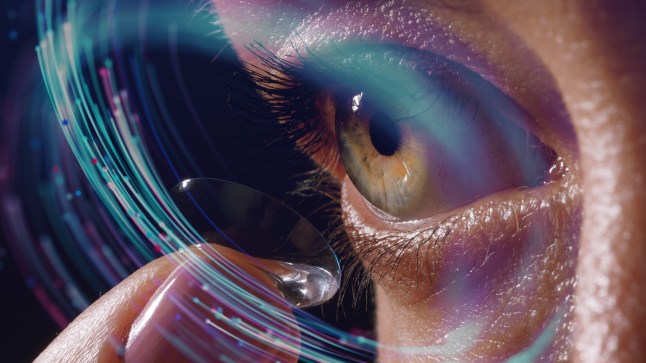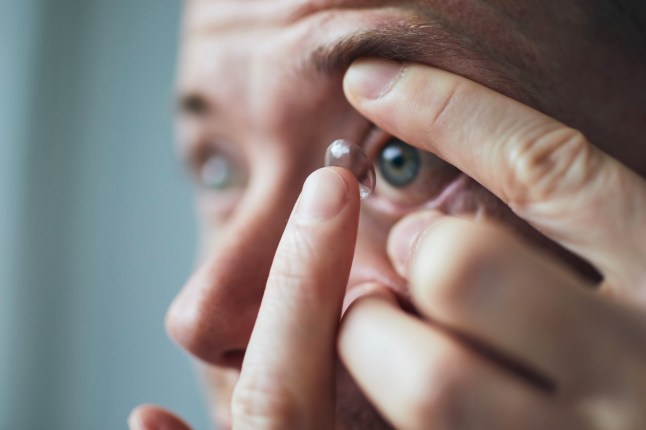 2025-05-26
IDOPRESS
2025-05-26
IDOPRESS

A special contact lens could bring wearers closer to super-sight (Picture: Getty)
It’s already possible for technology to see in the dark: just think of a baby monitor,a wildlife camera,or night vision goggles.
But now,scientists have invented a contact lens that lets humans ‘see’ in the dark,even with their eyes closed.
It detects infrared light,which is a part of the spectrum usually invisible to humans,using tiny nanoparticles embedded into a material similar to that already used for normal contacts today.
The see-in-the-dark lenses do not need batteries or a wire.
While they won’t show a sharp and zoomed in picture of what’s ahead,they can give clues and pick up light sources which would otherwise be hidden.
The study,published in Cell,says that study participants wearing the lenses could identify sources of Near-infrared (NIR) light in a dark room.
‘When participants closed their eyes,their sensitivity to NIR light remained almost unchanged,but the sensitivity to visible light decreased over 200-fold,’ the study says.

You might get offered some in your Specsavers appointment one day (Picture: Getty)
‘This was attributed to the better penetration ability of NIR light through the eyelid,as previously demonstrated in mice.’
Wearing these lenses would not just be like a more integrated version of night vision goggles,because they do not amplify light. So you’d have to look at something pretty bright to get the benefit.
But it’s a fascinating step into the future possibilities for super-vision.
Scientists from the University of Science and Technology of China in Hefei made this possible by using nanoparticles – many times smaller than the thickness of paper – which can convert NIR into a shorter green wavelength which humans can see.
You might think these lenses would be incredibly expensive,but researchers estimated they only cost around US$200 per pair to make.
Most obviously,it could help people see during the night when it’s dark.
Everything that gives off heat emits infrared light,so it could make warm-blooded animals,electronics,and landscapes warmed by the sun during the day more visible.
You’ve probably seen infrared imaging with those thermal cameras that show your nose a different colour,because it’s colder as an extremity.
Researchers said the tech had many less obvious applications too,such as adding anti-counterfeit marks to paper notes,which could not be seen with the naked eye.
It could also help colour blind people by making shades more distinguishable.
Nature reported it may also have uses in healthcare,allowing doctors to detect tumours more easily without relying on bulky equipment.
Right now,they would not necessarily be that useful for any of this,because the vision it offers is blurry and indistinct.
But watch this space – with eyes open or closed.